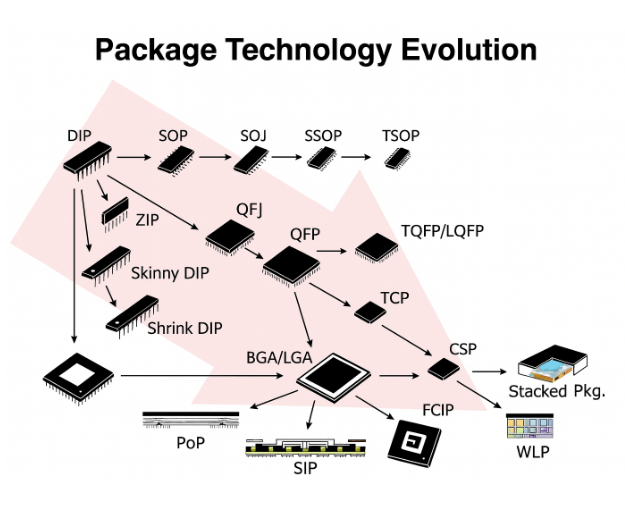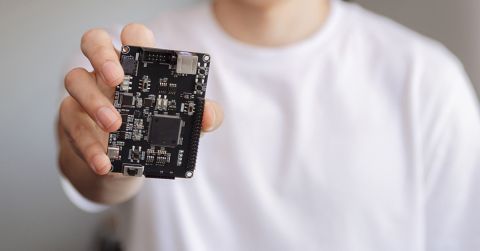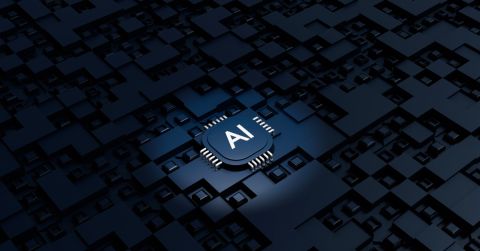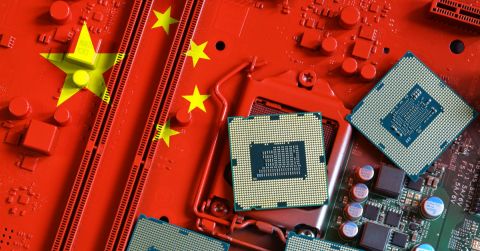IC Components Explained: A Comprehensive Guide to Integrated Circuits

Integrated circuits (ICs) are integral to modern electronics, packing millions — or even billions — of components into a single chip. From consumer devices to aerospace systems, these microelectronic powerhouses handle everything from computation to signal processing with unmatched efficiency. But what exactly goes into a circuit, and how do the microscopic circuit elements in ICs work together to drive today's technology?
This guide reviews the core components of an integrated circuit, explains their function, and explores why they are essential to nearly every piece of modern hardware. Whether you're sourcing ICs or refining a design, understanding these components is essential to making informed decisions.
What Are Integrated Circuits?
An integrated circuit is a compact device with multiple circuit elements in a single package. The circuit elements in an integrated circuit include transistors, resistors, capacitors, and diodes which work together to perform complex electronic functions. Over time, integrated circuits have packed more functions and features into a single chip, which has reduced the need for larger numbers of individual parts that were once wired together on circuit boards.
IC Development
IC development uses specialized software to place and route circuits on silicon, as well as design the packaging used to create the physical integrated circuit with its electrical contacts. The development of integrated circuits has driven manufacturing to higher precision and density, reaching the point where today’s devices contain billions of transistors on a single silicon die. This has led to high-speed processors, application-specific integrated circuits (ASICs), and many different discrete semiconductors for logic functions and power.
IC Fabrication
Most ICs are fabricated on silicon through a highly controlled manufacturing process that layers and etches intricate circuits onto a silicon wafer. This allows for mass production at a scale that would be impossible with individual electronic components. Over time, circuit elements on ICs have been driven smaller, following the broad trend of Moore’s law and other semiconductor scaling laws.
IC Packaging
Every IC component comes off the fabrication line as a silicon die which was detached from a large wafer. After a die is removed from a wafer, it must be assembled into a package, which can be soldered onto a PCB. In terms of functionality on the PCB, packaging is the other factor that has been responsible for the miniaturization of electronic devices across industries and product categories.
Early IC components in dual inline pin (DIP) packages have steadily decreased in size over time, becoming lower profile and smaller in terms of overall footprint. Today’s dense ASIC devices are packaged primarily as leadless components, such as quad flat no-lead (QFN) packaging, chip-scale packaging (CSP), and ball grid array (BGA) packaging. The image below shows how semiconductor packaging has evolved and scaled down over time.

Advanced Packaging
As Moore’s law was projected to begin slowing in the 2010’s, semiconductor manufacturers began looking for new ways to pack more features into smaller spaces, thus continuing the advancement of available features and computing power of IC components. This led to the development of advanced packaging technology, where chip and package designers have incorporated multiple semiconductor dies and discrete components into 2D, 2.5D, and 3D arrangements.
Advanced packaging has been the key to developing more powerful processors with more diverse features and more computing power in many areas of the electronics industry:
- Data center networking processors
- Mobile devices and smartphones
- Personal computers
- Ultra-small IoT devices
- Highly integrated systems-on-chip
Components which are designed as advanced packages have been major factors driving growth in critical new technologies, such as artificial intelligence and smartphones. These IC component design and assembly approaches will continue to push integration of new features into advanced IC components.
Core Functions of Integrated Circuits
Processing Signals and Executing Logic
In digital ICs, transistors are the primarily circuit element in logic circuits, and they control the output of logic gates that process binary data. Sequential and/or combinational logic circuits work together to perform more advanced logical functions, handling everything from simple arithmetic operations to data storage and decision-making.
Take a microprocessor, for example. It relies on billions of transistors in logic circuits switching on and off in precise sequences to execute embedded application instructions. When a logic circuit changes its state, signals move through specific pathways to carry out tasks like processing inputs, running software, or managing system functions.
Power Regulation and Stability
Other IC components manage power to keep circuits running smoothly. Some ICs are highly integrated power regulators with small footprint on the PCB, which maintain a consistent power supply even when input voltage fluctuates. Other power regulator devices are actually controllers for larger regulator circuits or power converters, and they are used alongside discrete semiconductors and passives.
Communication Interfaces
For an IC to function within a larger system, it needs to communicate with external components. Many ICs also support standardized communication protocols like I²C, SPI, and UART, allowing them to interface seamlessly with sensors, memory chips, and processors. These connections are what make modern electronics modular and scalable.
Why ICs Are So Efficient
By integrating millions of circuits onto a single chip, ICs optimize speed, power efficiency, and reliability. This miniaturization reduces energy consumption, cuts manufacturing costs, and enables high-performance computing in compact devices. From industrial automation to consumer electronics, ICs are at the heart of nearly every modern electronic device.
Source Integrated Circuits Using Octopart
Finding the right IC components shouldn't be a hassle. With Octopart's intuitive search tools, you can quickly compare pricing, availability, and technical specs from trusted suppliers all in one place. Whether you're sourcing for high-volume manufacturing or you need a few hard-to-find components, Octopart simplifies the process with real-time data and easy filtering. Start your search today and get the components you need without the guesswork.
Frequently Asked Questions About IC Components
The $616.9 billion global integrated circuit market can be challenging to navigate. But Octopart has the expertise to provide the guidance you need. Here are some common inquiries we receive about IC components.
How do transistors within an integrated circuit operate, and what is their purpose?
Transistors are the workhorses of integrated circuits, acting as tiny switches that control the flow of electrical signals. Whether handling computations or fine-tuning electrical currents, transistors keep ICs running efficiently.
What is the difference between analog and digital integrated circuits?
Analog ICs process continuous signals, which makes them ideal for handling sound, temperature, and radio frequencies. They amplify, filter, and adjust real-world signals, making them essential for applications like medical sensors and communication systems. Digital ICs, on the other hand, perform logic operations on binary data, storing information, and driving modern computing. Most of today’s technology, from microcontrollers to memory chips, relies on digital ICs, while analog ICs remain critical for interpreting and managing real-world inputs.
Can integrated circuits be customized for specific applications?
Most ICs are designed with their functions defined by the circuits in silicon. Application-Specific Integrated Circuits (ASICs) are designed to perform specific functions and these cannot be changed or customized once the component is manufactured. If flexibility is needed, field-programmable gate arrays (FPGAs) or complex programmable logic devices (CPLDs) allow engineers to reconfigure logic operations even after manufacturing. If the existing set of IC components on the market do not provide the required functionality, a microprocessor could be programmed to perform the desired functions or a custom IC would be required.










